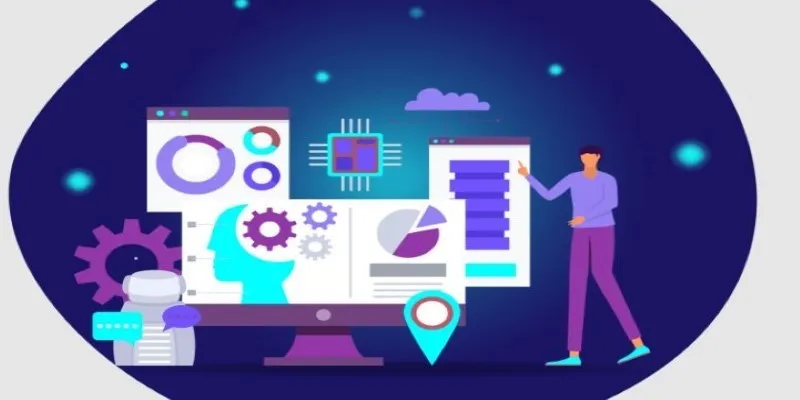Modern business strategies across various industries rely heavily on chatbots, a key component of conversational AI. These chatbots enable businesses to offer efficient customer support and e-commerce assistance, enhancing user experiences through scalable operations. However, despite their widespread adoption, these tools often fall short of essential benchmarks.
The Current State of Chatbots

Chatbots are extensively applied in industries such as e-commerce, healthcare, and telecommunications, thanks to their AI features like Natural Language Processing (NLP) and Machine Learning (ML). They handle a wide range of queries, from simple FAQs to complex technical support tasks, such as processing transactions and resolving technical issues.
According to a report by Gartner, by 2027, chatbots will become the primary customer service channel for nearly 25% of businesses, a significant increase from 2% in 2019. However, despite their potential, many users report mixed experiences due to certain limitations.
Key Flaws in Chatbot Technology
To reach their full potential, today’s chatbots must address several critical shortcomings.
1. Lack of Contextual Understanding
One of the most significant limitations of current chatbots is their inability to understand context effectively. While advanced NLP tools have made progress, many chatbots still struggle with nuances such as slang, idioms, or conversational subtleties.
For example, if a user says, “I can’t find the refund option,” the chatbot may misinterpret this as a standard refund request rather than a navigation issue, leading to frustration and disruption in user experience.
2. Overreliance on Predefined Scripts
Many chatbots operate based on rigid conversational paths built around predefined scripts. While effective for simple tasks, this approach limits their ability to handle dynamic or open-ended interactions.
A scripted bot may assist with “What are your store hours?” but struggle with requests like “Can you recommend items similar to what I bought last month?” This static nature hinders personalization and proactive engagement.
3. Lack of Emotional Intelligence
Chatbots often fail to interpret emotional cues, limiting their ability to provide empathetic responses. In stressful situations like billing issues or service disruptions, this lack of empathy can make interactions feel impersonal and robotic.
For instance, a user saying, “I’m really upset about this charge on my account!” may expect acknowledgment of their frustration. Without emotionally intelligent responses, customer satisfaction can decrease, potentially leading to churn.
4. Data Privacy and Security Concerns
Chatbots frequently handle sensitive user data, making privacy and security a top concern. Users are cautious about chatbots collecting excessive information without transparency or adequate safeguards. A poorly secured chatbot could become a target for cyberattacks, leading to data breaches and eroding trust.
5. Accessibility Challenges
Not all users communicate in the same way, and many chatbots lack essential accessibility features. Whether it’s difficulties engaging with users relying on screen readers or failing to accommodate non-native English speakers, these accessibility barriers prevent some users from enjoying seamless chatbot interactions.
Why These Flaws Matter
These flaws are not just minor inconveniences; they have a direct impact on customer experience, business outcomes, and brand reputation.
- User Frustration : A chatbot that fails to understand a user’s intent can lead to dissatisfaction, increasing the likelihood of drop-offs or negative reviews.
- Inefficiency : Limited capabilities force users to escalate to human support, resulting in longer wait times and increased costs.
- Loss of Trust : Security mishaps or poor emotional intelligence can make customers feel undervalued, damaging trust and loyalty.
- Missed Opportunities : When chatbots cannot accurately interpret user intents, they miss valuable information that could improve services or upsell products.
Solving Chatbot Flaws to Unlock Their Future Potential
Addressing these issues requires innovation, careful planning, and a commitment to user-centric design. Here’s how chatbots can move towards realizing their full potential.
1. Improving Contextual Understanding with Advanced AI
To bridge the gap in understanding, chatbots need more robust NLP models coupled with continuous training on diverse datasets. AI advancements such as OpenAI’s GPT-4 and Google’s BERT demonstrate the potential to create conversational AI that closely mimics human understanding.
These improvements can help chatbots distinguish between similar phrases with different meanings and provide responses tailored to the conversation’s context.
2. Integrating Machine Learning for Dynamic Responses
Machine learning allows chatbots to go beyond predefined scripts and generate dynamic responses. By analyzing user history and behavior, a chatbot can make proactive suggestions.
For example, an ML-enhanced chatbot could recommend products based on past purchases or tailor responses based on user preferences, boosting efficiency and creating a more personalized experience.
3. Embedding Emotional Intelligence
Integrating emotional AI could help chatbots identify and adapt to users’ emotional states. Sentiment analysis algorithms can detect positive or negative language and adjust responses accordingly.
For instance, a user expressing frustration might trigger a reassuring response such as “I understand how frustrating this is, and I’m here to help resolve it for you quickly.”
4. Strengthening Security Protocols
Organizations deploying chatbots must prioritize data security by implementing robust encryption methods, complying with regulations like GDPR, and maintaining transparent data usage policies. Chatbots should also clearly communicate what data they collect and why, helping build user trust.
5. Focusing on Inclusivity and Accessibility
To improve inclusivity, businesses should design chatbots with accessibility in mind. Features such as compatibility with assistive technologies, multilingual support, and simplified interaction modes can ensure a broader audience benefits from chatbot services.
6. Combining AI with Human Support
Even the most advanced chatbot is unlikely to replace human empathy. Instead, businesses should focus on blending AI and human support. Chatbots can handle repetitive tasks, while humans address complex or emotionally charged interactions. This hybrid approach creates an optimal customer support system.
What the Future Holds for Chatbots

If businesses address these flaws, the future of chatbots is incredibly promising. They could evolve into fully versatile virtual assistants, capable of handling complex tasks and providing a seamless customer experience. Some experts predict that chatbots will become the primary form of customer service in the near future.
More advanced chatbots could also play a significant role in emerging areas like healthcare triage, legal advice, or education, where contextual understanding, empathy, and accessibility will be crucial.
Conclusion
While chatbots hold immense potential, addressing their existing flaws is critical to unlocking their future capabilities. Issues such as limited contextual understanding, miscommunication, and lack of emotional intelligence must be tackled through advancements in machine learning, natural language processing, and ethical AI design. By focusing on these improvements, chatbots can become more intuitive, reliable, and human-like in their interactions.
 zfn9
zfn9






















